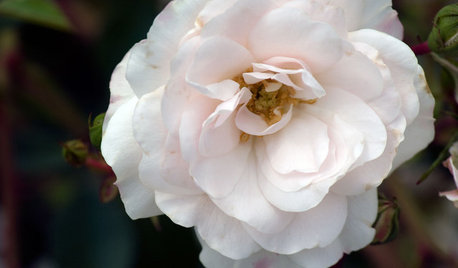What makes rose canes die?
contrary_grow
15 years ago
Related Stories

DECORATING GUIDESDIY: Make a Candy-Cane Striped Holiday Wreath
Heather from Whipper Berry shows us how to make an easy and creative holiday decoration for your door
Full Story
WINTER GARDENINGPruning Secrets for Exquisite Roses
Encourage gorgeous blooms year after year with this time-tested advice on how to prune your rosebush in winter for health and shape
Full Story
GARDENING GUIDESRoses: Crowning Touch of Gardens
Whether you're the Miss or Mister America of gardening or take a hands-off approach, roses can be a winning addition to your landscape
Full Story
GARDENING GUIDES5 Favorite White Roses for a Purely Beautiful Garden
How does your garden glow? With roses that look like light and smell divine
Full Story
FEEL-GOOD HOMEWhat Really Makes Us Happy at Home? Find Out From a New Houzz Survey
Great design has a powerful impact on our happiness in our homes. So do good cooking smells, family conversations and, yes, big-screen TVs
Full Story
GARDENING GUIDESGreat Design Plant: Sally Holmes Rose
This simple yet versatile climbing rose grows vigorously all year; plant now for abundant spring and summer blooms
Full Story
SPRING GARDENINGHow to Grow a Rose Garden in Pots
Everything can come up roses, even without a plot of soil in sight. This step-by-step guide to growing roses in containers shows you how
Full Story
GARDENING GUIDESWhat Kind of Roses Should You Grow?
Want to add the beauty of roses to your garden? Find out which ones, from old-fashioned to modern, are right for you
Full Story
PLANTING IDEASGreat Garden Combo: Rose + Clematis for Small-Space Impact
We all need somebody to lean on. And when a rose supports a climbing vine, the results can totally transform a small garden
Full Story
GARDENING GUIDES6 Captivating Roses for an Alluringly Fragrant Garden
Perfume your garden with aromas from richly spicy to lightly sweet, without sacrificing an inch of color
Full Story









hoovb zone 9 sunset 23
jardineratx
Related Professionals
Mount Wilson Landscape Architects & Landscape Designers · Cincinnati Landscape Contractors · Desert Hot Springs Landscape Contractors · Downey Landscape Contractors · Kaysville Landscape Contractors · New Baltimore Landscape Contractors · Oak Forest Landscape Contractors · Palm Beach Gardens Landscape Contractors · Weslaco Landscape Contractors · Whitehall Landscape Contractors · Spring Swimming Pool Builders · Kenosha Siding & Exteriors · Massapequa Siding & Exteriors · San Antonio Siding & Exteriors · Iowa City Siding & Exteriorscontrary_growOriginal Author
hoovb zone 9 sunset 23
anntn6b
jeff_zephyr
rosemeadow_gardener
contrary_growOriginal Author
austinwildflower
jerijen
len511
austinwildflower
barbarag_happy
carla17
rosefolly
linrose
len511
anntn6b
berndoodle
Bethany_Z5
buford
anntn6b